In This Second Part Of The Pentatonic Scale For Guitar Mini Series. You Will Learn How To Play & Get The Pentatonic Scale Under Your Fingers.
And Just In Case That You Haven’t Watched Or Read The First Part Of This Mini Series Then I Recommend That You Do It. There You Will Get An Overview And A Theoretical Foundation On Why It’s A Great Way To Start Soloing And Improvisation With The Pentatonic Scale.
If You Do The Exercises That I Will Show Here, Then You Will Be Able Own The Pentatonic Scale & Play It Effortlessly. Before You Can Learn To Play Guitar Solo You Need A Solid Foundation. The Following Is The Solid Foundation That Every Lead Guitarist Has.
So Let’s Get Right Into It!
Learn To Play Guitar Solo = Learn To Play The Pentatonic Scale For Guitar = Learn A Pentatonic Scale Position
Learn To Play Guitar Solo Is A Very Broad And Unspecific Goal. A Guitar Solo Is Highly Complex & It Consists Of Hundreds Of Topics That You Could Focus On. So You Need To Be More Specific To Make This Goal Tangible.
Learn To Play The Pentatonic Scale On The Guitar Is Way More Specific. But It Is Still Way Too Broad.
So Let’s Be Even More Specific, Cause It’s Best To Learn In Bite Size Chunks, So That You Don’t Get Overwhelmed.
Learn To Play A Pentatonic Scale Position The Best Way To Get Started.
There Are 5 Positions To Cover The Entire Fretboard. But You Will Focus Your Effort On Only One Position At A Time.
But What Is A Position?
You Might Have Heard Similar Terms Like Pentatonic Pattern, Pentatonic Shapes Or Pentatonic Boxes.
They All Mean The Same. So We Can Use These Terms Interchangeably.
A Position Is A Narrow & Exactly Defined Area Of Your Fretboard Where The Notes Of The Pentatonic Scale Are Located.
So Lets Take A Look At The First Position And Establish Two Ground Rules For Learning All Positions:

Two Ground Rules For Learning All Positions
- Start The Pentatonic Scale On The Root Note. And End It On The Root Note.
- Memorize The Root Notes. It’s Important For Two Reasons: First, Knowing Where The Root Notes Are, Gives You Orientation Later On, So You Can Shift Between Positions And Play All Over The Fretboard More Easily. And Second: It’s Allowing You To Play The Scale In A Different Key.
Big Picture Overview: The Five Positions And How They Cover The Entire Fretboard.
Take A Look How The Five Positions Cover The Entire Fretboard.





This Here Is All You Need:
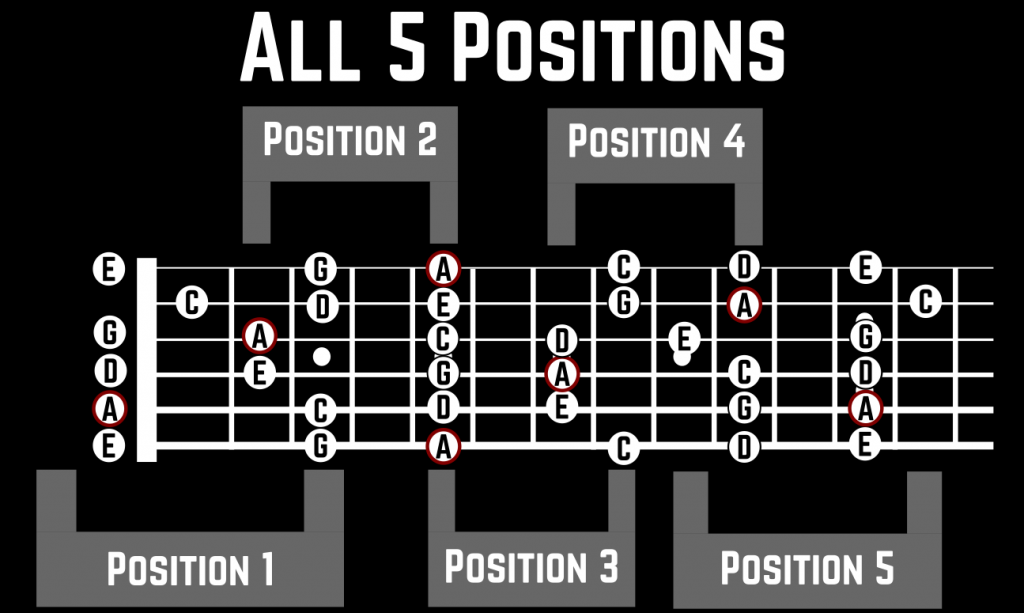
I Want You To Notice That Every Position Is Limited To An Area Of Your Fretboard And That Every Position Interlocks With It’s Neighboring Position.
Right Know It’s Totally Ok, If This Confuses You. You Will Understand The Whole Concept After You’ve Practiced It.
That’s All You Need To Know To Play Over The Entire Fretboard.
But Wait! You Might Say That’s Not The Entire Fretboard. That’s Only Half Of It.
Exactly! You’re Right.
But,
As You May Know, The 12th Fret Is Marked On Almost Every Guitar With 2 Dots. That’s Because It Marks The Octave. In Other Words: The Note Pattern Repeats From The 12th Fret. That Means The Note On The 12th Fret Is Named The Same As The Note On The Open String. The Note On The 13th Fret Is The Named The Same As The Note On The 1st Fret And So On.
With That Said:
You Repeat The Pentatonic Positions.
Consequently There Is No 6th Position To Learn.
If You Want To Play Higher Than The 5th Position, Then You Play The 1st Position Again. But You Start On The 12th Fret Instead On The Open String.
This Is How It Looks Like:

Notice That These Are The Same Shapes Just On Different Frets.
Take A Look At The Whole Picture:




Now That You Know How These Pattern Can Cover The Entire Fretboard, It’s Time To Play.
How To Play And Practice The Minor Pentatonic Positions
If This Is Your First Scale That You Learn On The Guitar Then Prevent Overwhelm At All Costs & Don’t Learn All Positions At Once.
This Might Seem Obvious But It Needs To Be Said. Just Because There Are 5 Positions It’s A Not A Good Idea Trying To Learn Them All In A Short Amount Of Time. Learning A Scale Is A Longterm Goal. If This Is Your First Scale You Learn On The Guitar, Then Don’t Try To Take Shortcuts But By Learning Them All At The Same Time.
It Will Lead You A Long Way Round, If Try To Eat The Elephant Without Slicing It. I Can Tell This You From My Own Experience And From Experience With Teaching Many Of My Students.
The Best Tip I Can Give You Here Is To Learn The Positions Which Are The Most Easy & Useful.
The 3rd Position Is Unquestionable The Most Used One. Start Here.
Then Learn The 2nd Position.
Then The 1st Position. But Start This Position On 12th Fret. It Will Be More Useful For Soloing. Learn The Position With The Start On The Open A String Once You’ve Learned All Five Positions And You’re In The Phase Of Connecting The Big Picture On The Entire Fretboard.
Move On To The 5th Position And The Last One Should Be The 4th Position.
Pentatonic Scale Exercises:
So How Do You Practice Effectively And Get These Positions Under Your Fingers? How Do You Own The Pentatonic Scale?
Let Me Show You Three Powerful Exercises, So You Can Master The Scale.
Do This First:
Just Pick A Single Pentatonic Position That You Wanna Learn And Stick With It, Until You Can Play The Following 3 Exercises Comfortably & Effortlessly.
Let’s Pretend You Are A Complete Beginner, So It’s Best To Start With The 3rd Position.
This Is Your 1st Step:
Pentatonic Exercise No. 1
Memorize The Root Note & Start The Pattern On The Lowest Root Note. Play The Scale Up And Down With Alternate Picking.
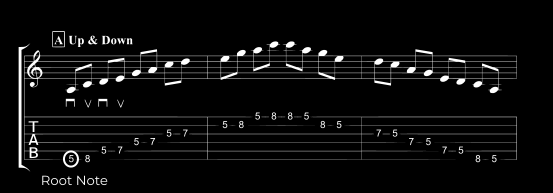
It’s Important That You Play Exercise. No. 1 For At Least 5 To 10 Min. Daily For An Extend Period Of Time. Maybe For A Some Weeks Or Months.
It All Depends On Your Current Level That You’re At. So You Have To Develop A Feeling For This Exercises. After A While Doing This Exercise You Will See, Feel & Hear The Progress.
Once You’ve Made Some Progress With Playing It Up & Down, Add Exercise No. 2 To Your Practice Schedule. This Triplet Sequence Is A Common Way For Professional Musicians To Practice All Kind Of Scales. So You Can Use This Sequence For Every Other Scale Later On Your Journey. So It’s Worth Practicing It. The Same Is True For Exercise No. 3 Which I Will Show You Afterwards.
Pentatonic Exercise No. 2 The Triplet Sequence
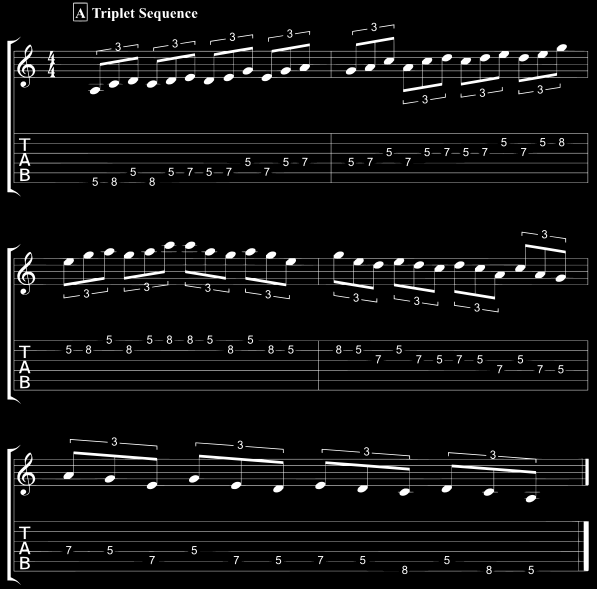
This Triplet Sequence Is A Fun One To Play. Feel Free To Use A Metronome. That’s A Common Method To Enhance Your Practice Session & Often Used To Build Fast Fingers. If You Do These Exercises Regularly, Then You Will Definitely Get Faster And Build A Better Technique.
Ok. So You’ve Practiced Exercises No. 1 And No. 2 For A While And You Are Now Quite Comfortable With ‘Em. Now It’s Time To Learn The Last Exercise. It’s A 16th Note Sequence.
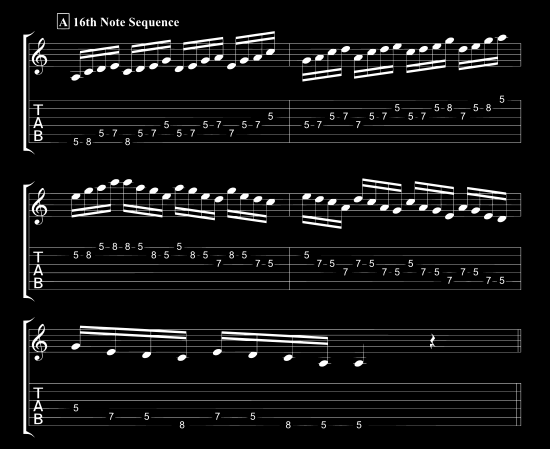
As You Can See & Feel This Exercise Is A Little Harder Than The Previous One, So Give Yourself Time To Master It.
Let’s Say You Are Comfortable With All Three Exercises. So What Should You Do Next?
Make Sure To Continue Practicing All Three.
You Can Use Them As A Warm Up:
Your New Warm Up Could Look Like This:
5 Min. Ex.1, 5Min. Ex. 2 & 5Min. Ex. 3 = Total Warm Up Time: 15 Min. That’s Perfect!
Remember That The Goal Of These Three Exercises Is Just To Learn The Pentatonic Scale Shape On The Guitar. This Has Very Little To Do With Music. But It’s Necessary And Good For You! So Use It As A Warm Up Routine!
Just In Case That You Wanna See How The Three Exercises Are Performed On Every Of The Five Pentatonic Scale Positions I Have Listed The Tabs And Videos For You.
Here Are The Detailed Video Instructions And Tabs:
The Pentatonic Scale For Guitar: All Shapes & Exercises
The Pentatonic Scale For Guitar Position No. 1
1st Position/ Exercise No. 1

1st Position/ Exercise No. 2
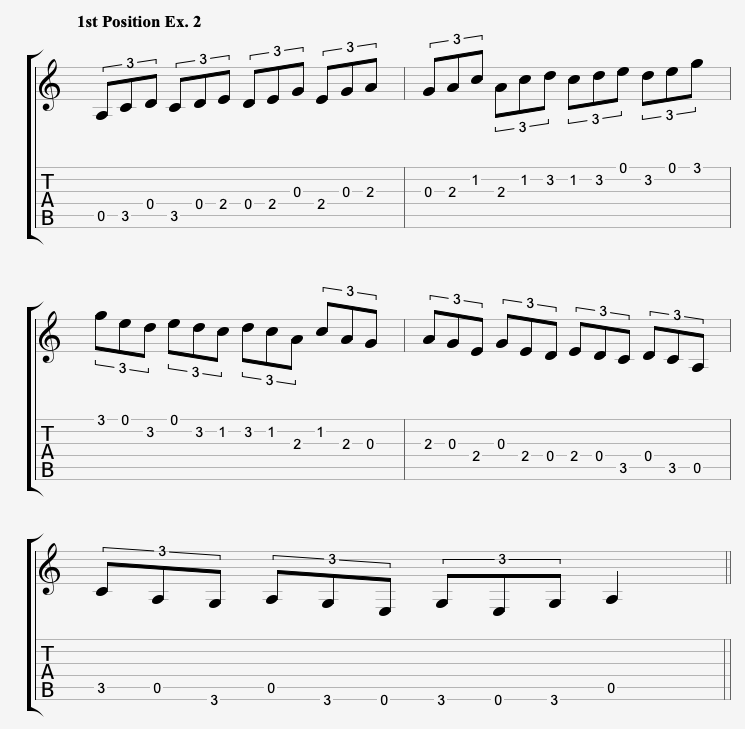
1st Position/ Exercise No. 3
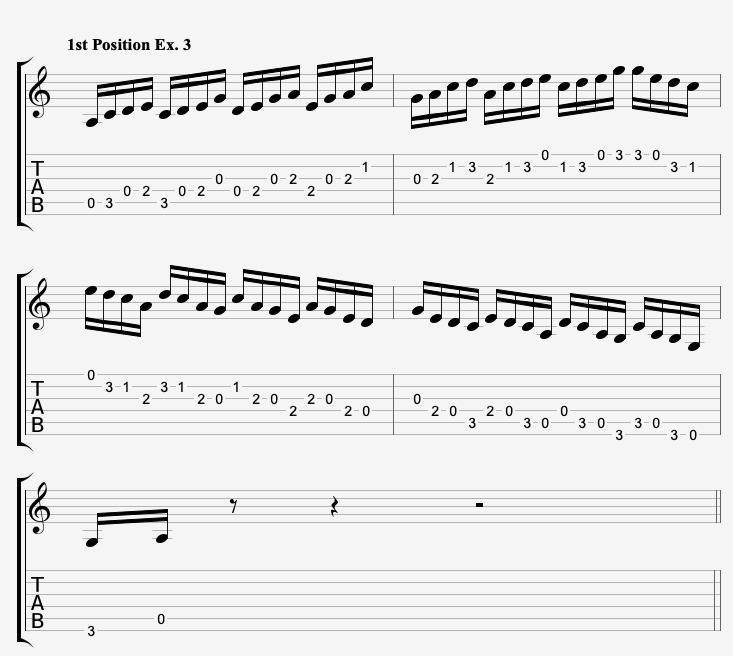
The Pentatonic Scale For Guitar Position No. 2
2nd Position/ Exercise No. 1
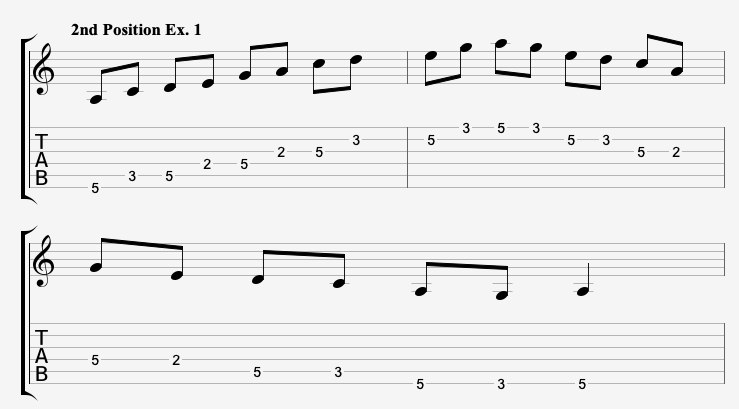
2nd Position/ Exercise No. 2
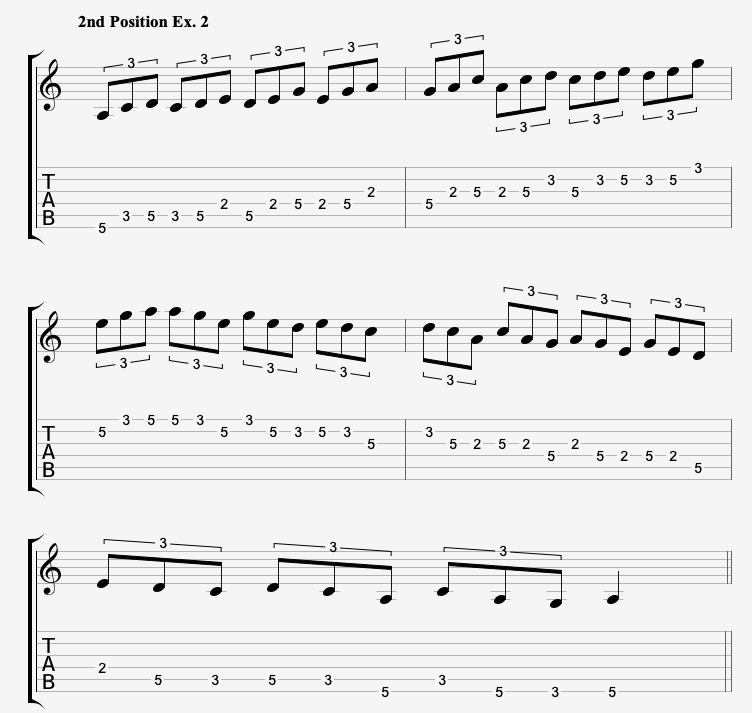
2nd Position/ Exercise No. 3
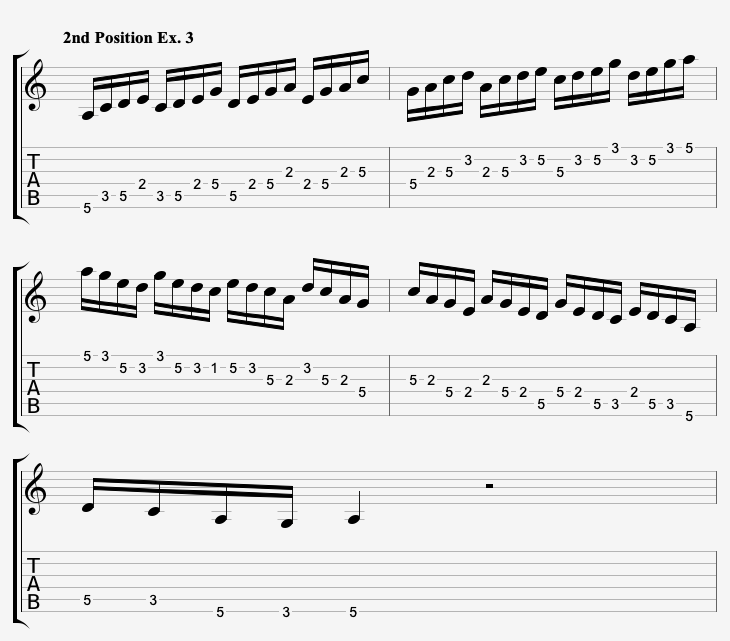
The Pentatonic Scale For Guitar Position No. 3
3rd Position/ Exercise No.1
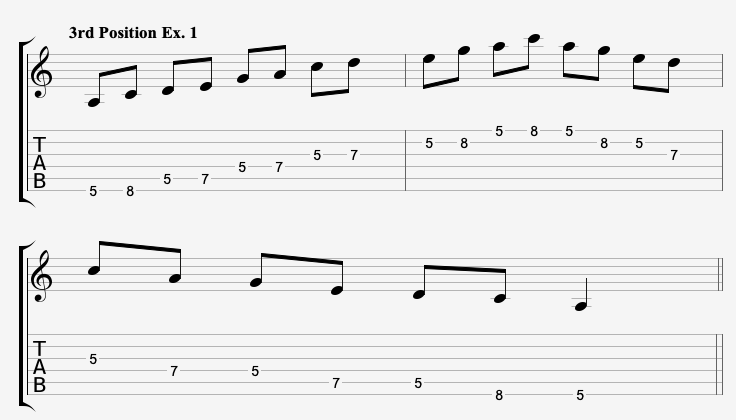
3rd Position/ Exercise No. 2
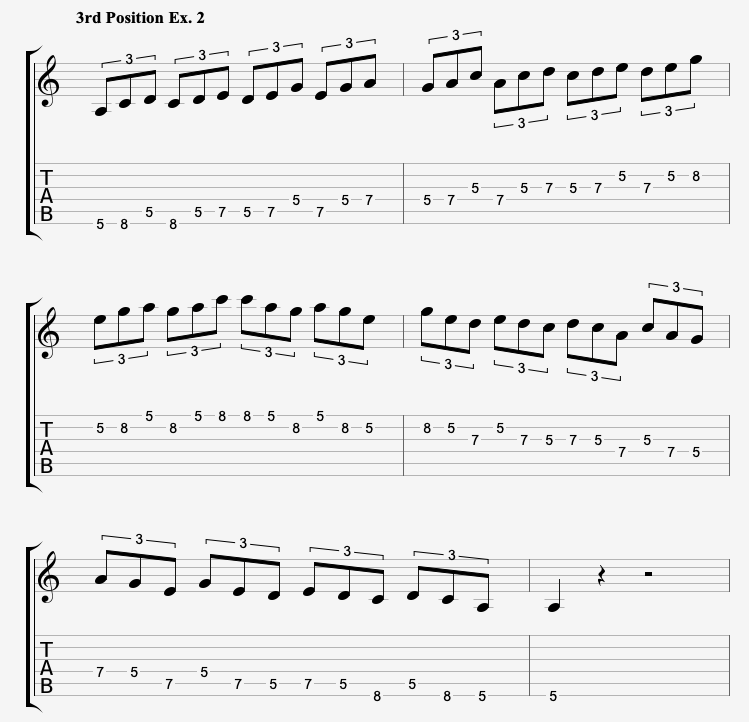
3rd Position/ Exercise No. 3
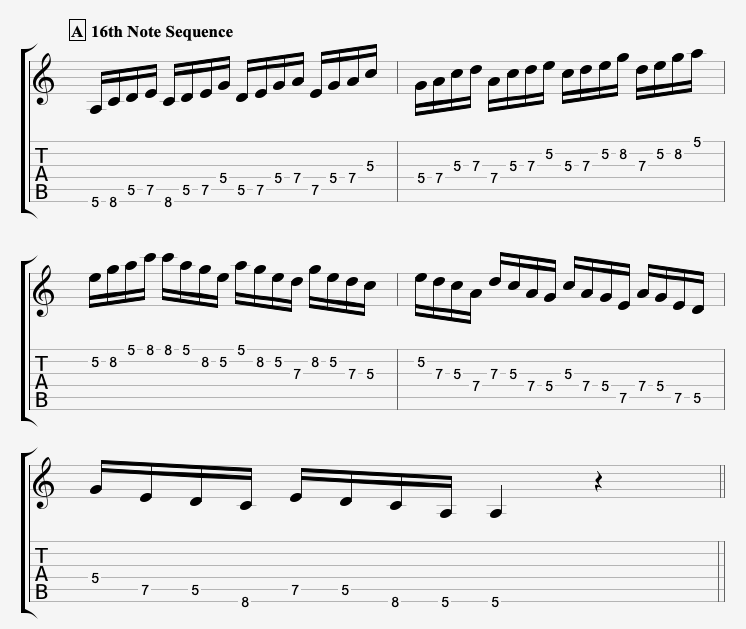
The Pentatonic Scale For Guitar Position No. 4
4th Position/ Exercise No. 1

4th Position/ Exercise No. 2
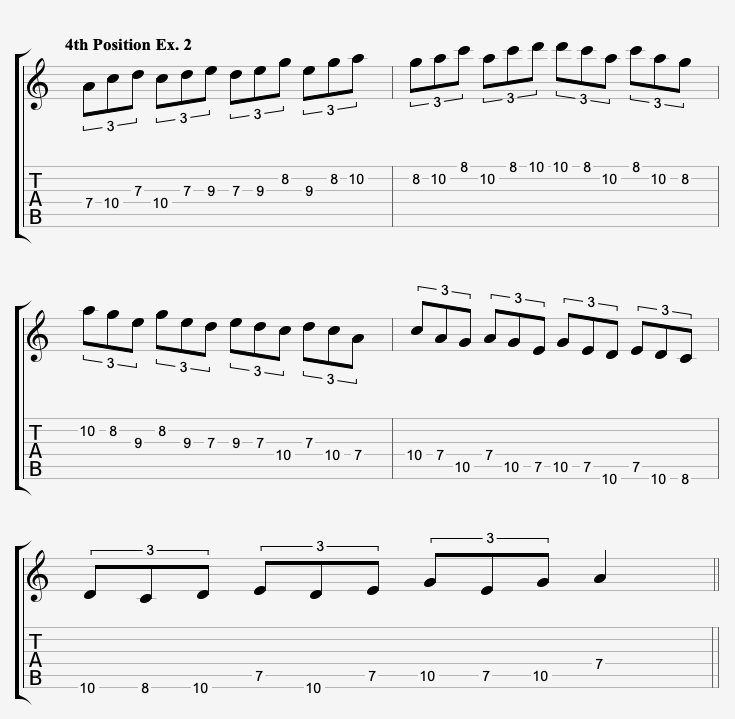
4th Position/ Exercise No. 3
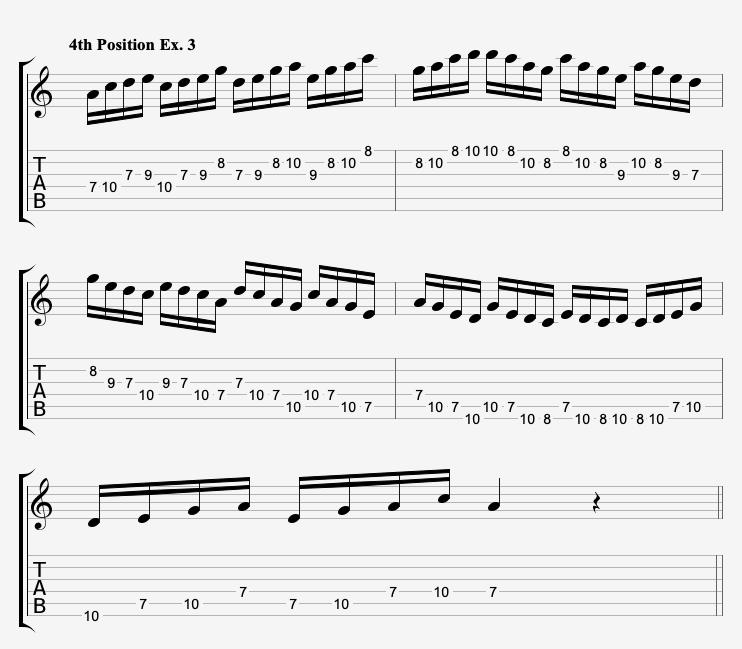
The Pentatonic Scale For Guitar Position No. 5
5th Position/ Exercise No. 1

5th Position/ Exercise No. 2
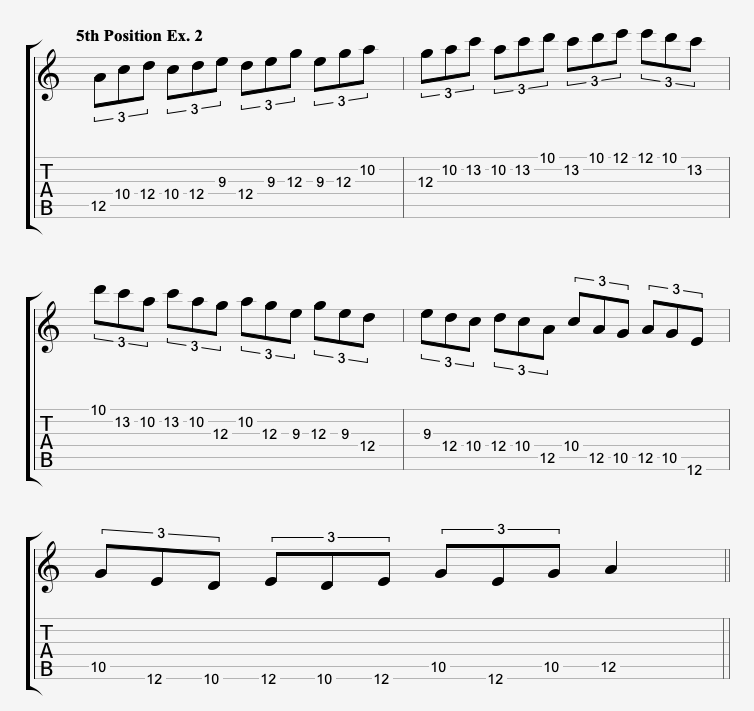
5th Position/ Exercise No. 3
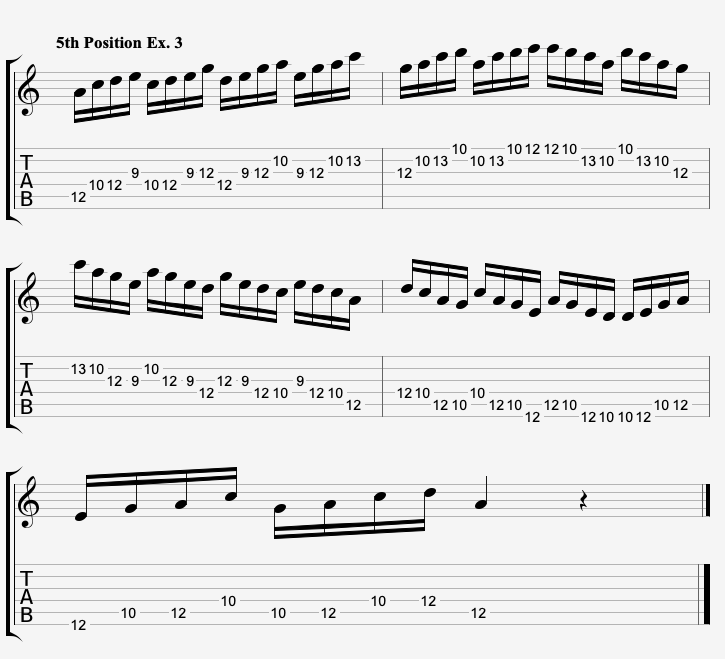
Conclusion
Alright. That’s A Lot Of Homework. I know. Like I Said Before: Don’t Overwhelm Yourself And Take Your Time. Make Small Steps But Keep Practicing And You’re Bound To Be Successful! Remember That This Is The Foundation For Improvisation & Soloing. If You Wanna Learn To Play Guitar Solo Then This Stuff Is Mandatory. And It’s Fun Too! Maybe Not In The Beginning, But Almost Every Guitarist Can Find Some Satisfaction And Enjoyment In Playing And Practicing Scales. Especially When You See Progress. Discover It For Yourself!
Just In Case That You Might Find It Even Hard To Play Any Of This Position Because You Can’t Move Your Fingers Effortlessly On The Fretboard, Then I Recommend You Do These Exercises Here. They Might Work Wonders, If Do Them For A While.
In Part III Of This Mini Series I Will Teach You How You Can Create Your Own Licks & Solos By Using The Pentatonic Scale. That’s The Part Where The Real Fun Kicks In.
So Stay Tuned, Go Practice & Be Your Own Teacher.

Here Is Part One Of This Mini Series
If You Like That Article Then You Might Like
“The 10 Commandments Of Highly Skilled Guitarists”
Get This Free Guide If Wanna Start To Take Your Guitar Playing Serious & And Set A Foundation For Massive Progress.
